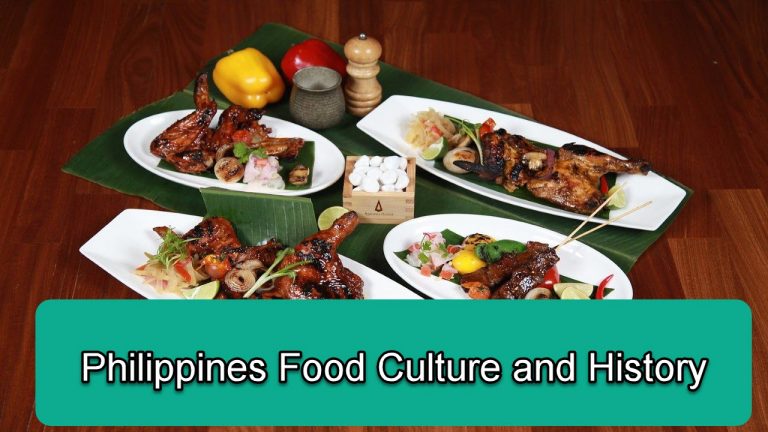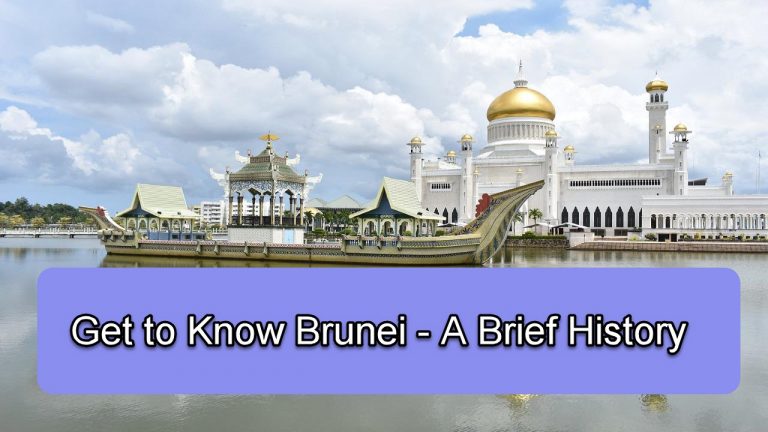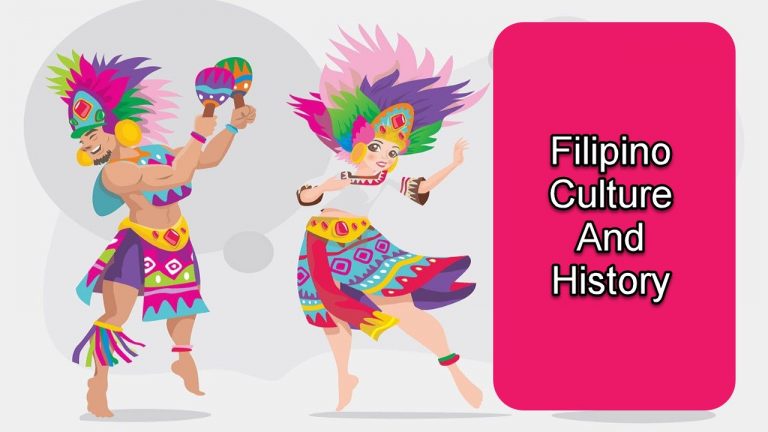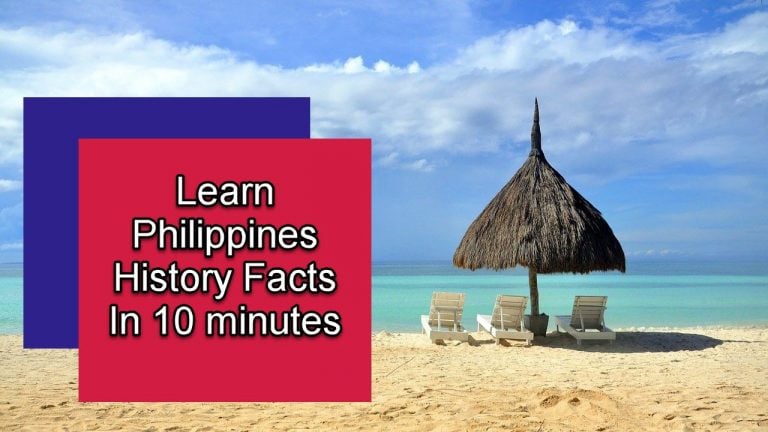Learn Indonesian History Facts In 10 minutes

The first thing that comes to mind when we think about Indonesia is Bali. Aside from Bali, Indonesia has many other stunning sights, and the beautiful country is rich in natural resources. Indonesian culture, people, and cuisine are fantastic. Let us explore and learn more about Indonesia’s history. If you want to learn more about the history of Indonesia, scroll down and keep reading.
Indonesian History Facts

Brief History Of Indonesian Archipelago
Around 500,000 years ago, the Indonesian archipelago was occupied, as seen on fossilised remains of Homo erectus, popularly known as the “Java Man”. Making up the majority of the country’s population today are the Austronesian peoples. They moved to Southeast Asia from what is now Taiwan. They came in the archipelago during 2,000 BCE and, as they moved east, restricted the indigenous Melanesian peoples to the far eastern parts. From many centuries BCE, the archipelago’s strategic sea-lane location facilitated inter-island and international trade, particularly with Indian kingdoms and Chinese dynasties. Since then, trade has impacted Indonesian history.
The Hindu religion was brought to the islands by Indian educators. The islands had significant Hindu and Buddhist kingdoms and empires in the 7th century. Arab traders later brought Islam to the islands about the year 1100 AD. Hinduism is the most widely practiced religion in Bali. However, most Indonesians are Muslims.
The archipelago’s first record of Islamized inhabitants dates back to the 13th century in northern Sumatra. Other sections of the region eventually accepted Islam, and by the end of the 16th century, it had become the dominant religion in Java and Sumatra. Islam shaped the prevalent form of Islam in Indonesia, mainly in Java, by overlaying and mixing existing cultural and religion aspects.
From the 16th century, the Portuguese arrived in Indonesia, hoping to monopolize Maluku’s nutmeg, cloves, and cubeb pepper.
Europeans from Portugal, Spain, the Netherlands, and England fought for control of the islands and the spices that thrived there. Indonesia at that time was known as the Spice islands. The Dutch, eventually triumphed and gained power, and ruled Indonesia.
During World War II, the Japanese occupation and invasion of Indonesia (1942–1945) abolished Dutch rule and boosted the previously restricted Indonesian independence movement. Sukarno, a nationalist leader, declared independence and became president two days after Japan surrendered in August 1945. The Netherlands attempted to reclaim control, but after a bloody armed and political struggle, the Dutch finally recognized Indonesian independence in December 1949, despite international opposition.
Indonesia is derived from the Greek terms Indos and Nesos, which mean “Indian islands”. The name originates back to the nineteenth century, long before Indonesia became a free country. An English ethnologist named George Windsor Earl proposed the terms Indunesians and Malayunesians for the inhabitants of the “Indian Archipelago or Malay Archipelago” in 1850.
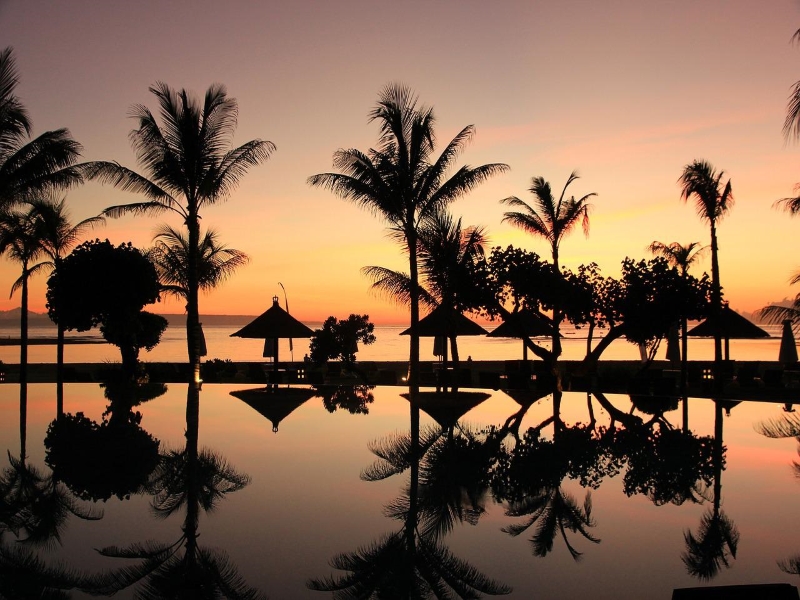
Indonesian Geography
Indonesia, officially the Republic Of Indonesia, is a country located between the Indian and Pacific oceans in Southeast Asia and Oceania. The major islands, Sumatra, Java, Kalimantan, West Papua (formerly known as Irian Jaya), Sulawesi, and areas of Borneo and New Guinea make up the country’s roughly 17,000 islands. Indonesia is the world’s largest archipelago country, and the 14th largest country in terms of land area. Indonesia is the world’s fourth-most populous country and the world’s most populous Muslim-majority country, with 270 million inhabitants. More than half of Indonesia’s population lives in Java, the world’s most populous island.
The country shares land borders with Papua New Guinea on the island of New Guinea, Malaysia on Borneo and Sebatik, and East Timor on the island of Timor, and maritime borders with Malaysia, Vietnam, Singapore, the Philippines, Palau, and Australia.
The official language of Indonesia is Bahasa Indonesia, and the capital city is Jakarta.
Climate
Indonesia has a tropical climate. Wet season and dry season are the two seasons of Indonesia. The dry season in Indonesia lasts from May to October, and the wet season lasts from November to April. The tropical rainforest climate that can be found on all of Indonesia’s big islands dominates the country’s climate.
According to many research, Indonesia is in grave danger from the anticipated consequences of climate change. Unreduced emissions would result in an average temperature rise of around 1 degree Celsius (2 degrees Fahrenheit), which will increase the frequency of drought and scarcity of food supply, as well as various diseases and wildfires. Rising sea levels would also threaten the majority of Indonesia’s population who live in low-lying coastal areas.
Geology
Indonesian archipelago has more than 150 volcanoes, 127 of which are presently active volcanoes. Indonesia lies on the boundaries of the Pacific, Eurasian, and Australian tectonic plates, which form volcanoes as they intersect, that explains why it has many volcanoes.
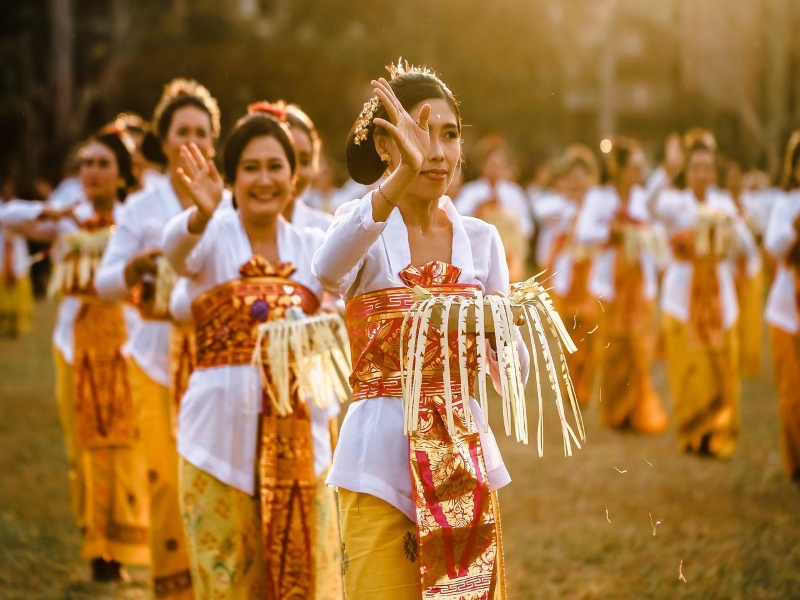
Indonesian People
Indonesia is a country rich in ethnic diversity, with over 1,300 native ethnic groups.
The Javanese are the most populous ethnic group, accounting for 40.2 percent of the population and possess political power. They are mostly found in the middle and eastern portions of Java, although there are also significant quantities in most provinces. Sundanese are the second-largest ethnic group, followed by Batak, Madurese, Betawi, Minangkabau, Buginese, and Malay.
Balinese people, one of Indonesia’s many ethnic groups, have a highly rich culture. They use more vibrant colors and decorations. All natural occurrences, according to the Balinese, have souls. Their lives center around providing fruits and flowers to please the angry gods, and spirits govern all they do.
Indonesians are a pleasant, fun-loving people in general. They are naturally artistic and express themselves through paint, wood, metals, clay, and stone, as well as dance and drama..
There are over 700 indigenous languages, and most Indonesians speak atleast one of them, which are commonly their first language. The majority are Austronesian languages, while eastern Indonesia is home to approximately 270 Papuan languages. Javanese is the most extensively spoken of these.

Indonesian Government
Indonesia has a democratically elected government. In other words, Indonesia has republican government. The Indonesian President is the country’s head of state and government, as well as the commander-in-chief of the Indonesian National Armed Forces (Tentara Nasional Indonesia, TNI) and the director of domestic governance, policymaking, and foreign affairs. Their president can only serve two consecutive five-year terms.
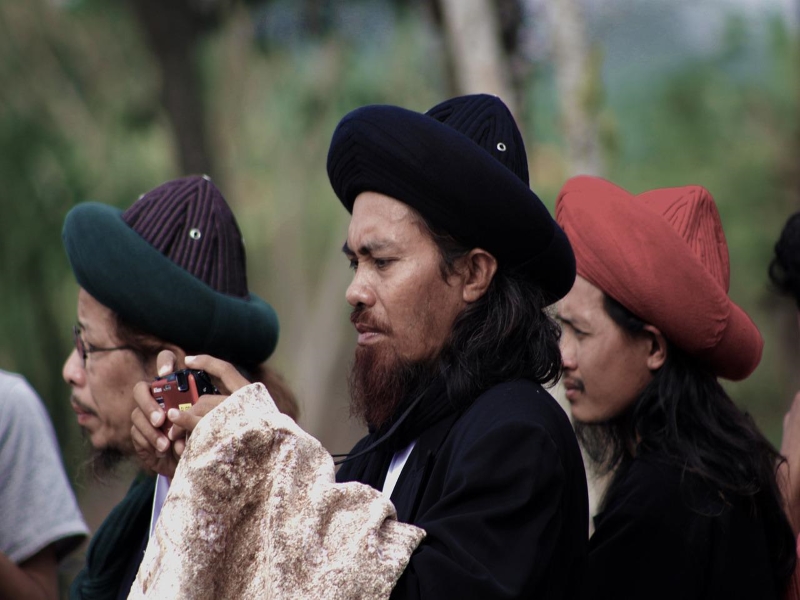
Religion In Indonesia
Islam, Protestant, Roman Catholic, Hinduism, Buddhism, and Confucianism are officially recognized by the government. Indonesia has the largest Muslim population in the world. In 2018, 86.7% are Muslims. Nearly 11% of Indonesians are Christians, with the rest being Hindus, Buddhists, and other religions. The majority of Hindus are Balinese, while the majority of Buddhists are Chinese Indonesians.
During the first century CE, Hindu teachings reached the archipelago. Buddhism emerged in Indonesia about the 6th century, and its existence in Indonesia is linked with Hinduism, as several Buddhist empires arose at the same time. Majapahit, Sailendra, Srivijaya, and Mataram were among the great and prominent Hindu and Buddhist kingdoms that rose and fell throughout the archipelago. Hinduism and Buddhism continue to play a vital influence on Indonesian culture, even though they are no longer the mainstream religions. Islam was first introduced in the 8th century CE by Sunni traders as well as Sufi traders of the Indian subcontinent and southern Arabia. Portuguese traders and missionaries brought Catholicism to the country.
Marriage between different faiths is prohibited in Indonesia. A Protestant man, for instance, cannot marry a Hindu woman, and a Buddhist guy, likewise, cannot marry a Muslim woman. If two people of different religions are truly interested in marrying, one of them should always to the other’s religion.
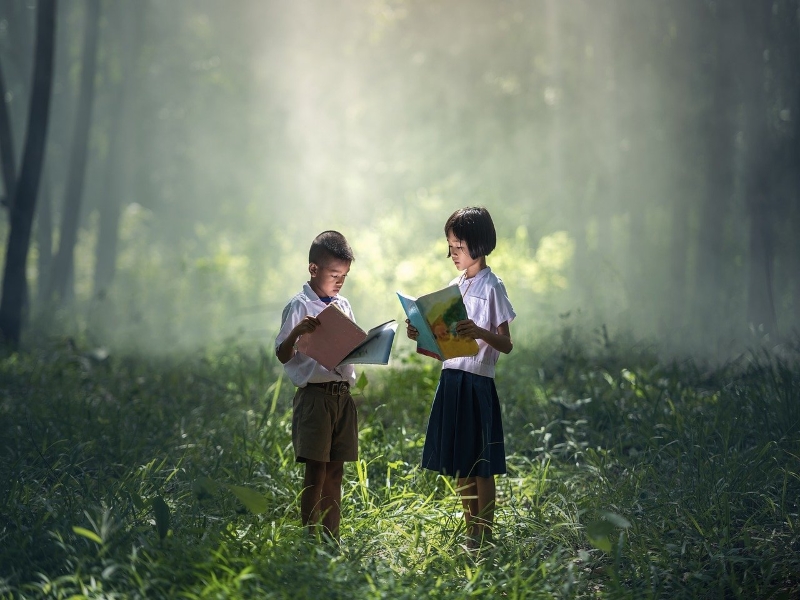
Health And Education In Indonesia
In Indonesia, education is required for 12 years. Parents have the option to enroll their children to state-run, non-sectarian schools or private or semi-private religious institutions, which are overseen by the Ministries of Education and Religion. There are also private foreign schools in the country that do not follow the national curriculum.
In the year 2018, the primary education has a 93 percent enrolment rate, secondary school has a 79 percent enrollment rate, and tertiary education has a 36 percent enrollment rate. During this time, Indonesia has 4,670 higher educational institutions, with the majority (74 percent) situated in Sumatra and Java. The University of Indonesia, Gadjah Mada University, and the Bandung Institute of Technology are the top universities in Indonesia.
In 2014, the government of Indonesia formed the National Health Insurance, (Jaminan Kesehatan Nasional, JK), as a means to attain universal health care. It covers a variety of services provided by both public and private companies who have chosen to participate in the system. Despite significant advancements in recent decades, such as growing life expectancy and decreasing child mortality, difficulties such as maternal and child health, poor air quality, hunger, high smoking rates, and infectious diseases still exist.
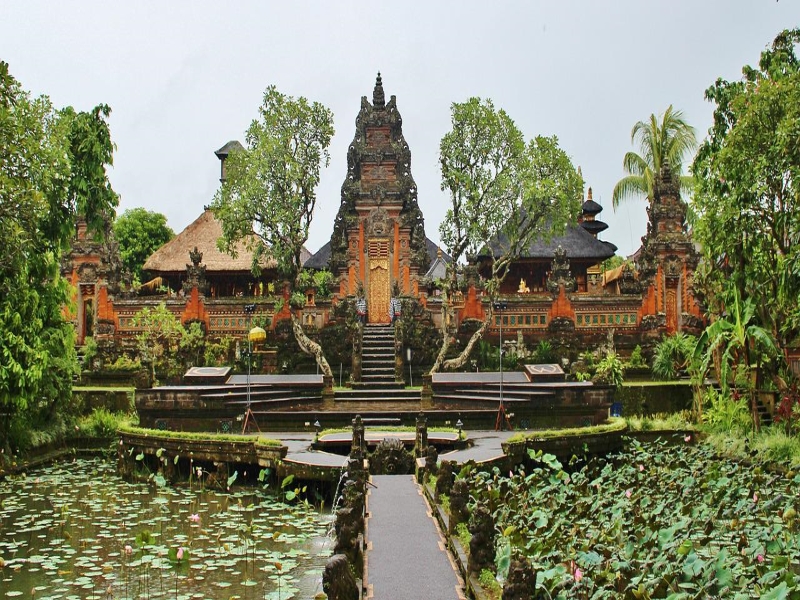
Indonesia’s Tourism
The top five sources of travelers to Indonesia are China, Malaysia, Singapore, Australia, and Japan. Wonderful Indonesia has been the country’s international method of advertising to attract tourism since 2011. They do indeed live up to their tourism slogan, “Wonderful Indonesia”.
Indonesian tourism is mostly centered on nature and culture. The former can brag of a tropical environment, a huge archipelago, and a long stretch of beach, while the later compliments those with a rich cultural heritage representing Indonesia’s vibrant history and ethnic variety. Indonesia has a well-preserved natural ecology, with rain forests comprising about half of the country (225 million acres). Popular tourist locations include Sumatra’s and Kalimantan’s forests, as well as the Orangutan Wildlife Reserve. Furthermore, the well-known Bali, an Indonesian province. In the Indonesian archipelago, Bali is the most popular island vacation destination. It is home to a historic culture recognized for its great hospitality, as well as fascinating temples and palaces.

Indonesian Culture
Cuisine
One of the most unique, lively and exotic cuisine in the world is the Indonesian cuisine. There are several regional cuisines, many of which are inspired on indigenous culture and foreign influences such as Chinese, Middle Eastern, European, and Indian cuisines. Their staple food is rice, and prepared with other side dishes of vegetables and meat. The main ingredients that are commonly used in Indonesian dishes are spices, particularly chili, coconut milk, fish, and chicken.
Nasi goreng, sate, gado-gado, and soto are all popular dishes that are recognized as their national foods. On the other hand, the Ministry of Tourism, designated tumpeng as their official national food in 2014, citing its ability to bring together a wide range of culinary cultures.
Indonesian’s Architecture And Art
Foreign influences on Indonesian architecture have led in cultural changes as well as a significant impact on architectural methods and techniques. Traditional Indian influences have been the most prominent, but Arab, Chinese, and European influences have also been influential. Traditional carpentry, stone, masonry, and woodwork skills and accents have developed in vernacular architecture, resulting in a variety of traditional house types/rumah adat. Traditional houses and settlements differ depending on ethnic groupings, with each having its own customs and history.
Indonesian art includes both centuries-old art forms and more recent advanced conceptual art. Due to contacts and interactions fostered and often motivated by trade, Indonesian arts have incorporated foreign influences, most prominently from India, the Arab world, China, and Europe. In Bali, where the people are known for their craftsmanship, painting is a well-established and developed art.
Literature
The Sumatran tradition is the foundation of early modern Indonesian literature. During the years preceding up to and following independence, literature and poetry excelled. The government agency for popular literature, Balai Pustaka, was established in 1917 to support the growth of indigenous literature. Many experts regard the 1950s and 1960s as Indonesian literature’s Golden Age. The manner and qualities of modern Indonesian literature change with the political and social dynamics of the country, most especially the country’s independence war in the second half of the 1940s and the anti-communist mass executions in the mid-1960s.
Festival
Selametan Festival
Selametan is a Javanese communal feast that reflects the social harmony of people who partake in it. Sundanese, Javanese, and Madurese ethnic groups practice it. It can be perceived as a kind of gratitude, but many think that by participating, the believer is also seeking God’s blessings and protection. Selamet means safe from injury in Javanese, but it can also indicate successful, free of complications or obstructions. Birth, circumcision, engagement, marriage, and death are all common occasions for the selametan.
Harvest Festival
There are numerous festive celebrations and practices in Indonesia that are connected to agricultural production, from seed planting to harvesting. Seren Taun, a traditional Sundanese rice harvest festival and ceremony, is one of them. This celebration was initially practiced to commemorate the start of the new agricultural year in the Sundanese ancient calendar, as well as to show appreciation for the abundant rice harvest and to pray for the next prosperous crop.

